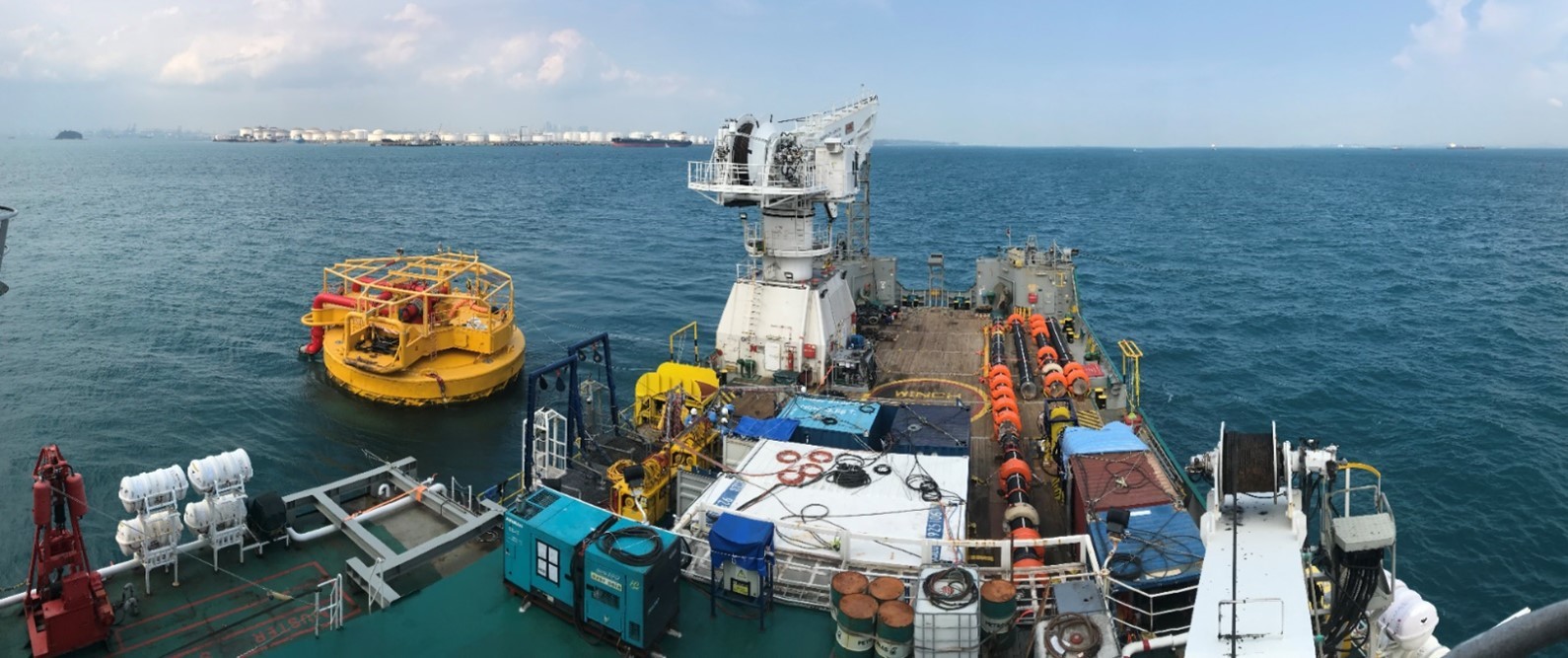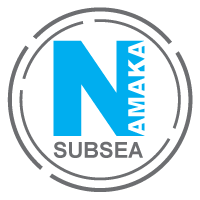SBM Twin Hose Changeout

Overview
Namaka Subsea was awarded a contract by an established diving contractor in Singapore to provide engineering consultancy services, and ensure industry best practice was adhered to, for the replacement of an SBM twin hose and control line on behalf of a major Oil and Gas Producer in the Asia Pacific region. The scope of work required all operations to be carried out in accordance with industry best practice and the latest IMCA guidelines. Namaka was initially required to carry out an IMCA DESIGN audit and a FMECA on the clients’ surface supplied air diving system, prior to the project mobilisation, to verify that the system was fit for its intended use and compliant with these guidelines.
Issues
The entire scope of work was required to be completed in compliance with IMCA guidelines and the Oil and Gas Producer’s recommended practices. During the initial IMCA DESIGN audit and FMECA of the surface supplied air diving system, a number of issues were identified that required to be addressed prior to the commencement of the system mobilisation and subsequent diving operation. Following on from the audit it was brought to the attention of Namaka Subsea that the procedures for carrying out the mobilisation and engineering work scope did not meet the Oil and Gas Producer’s recommended practices and so these were reviewed, updated and approved on site by Namaka Subsea.
Solution
Technical support for this project was provided by our Technical Director, Tom Marr, initially in Singapore then remotely from the UK, with onsite support in Singapore provided by UK and Asia Pacific Operations Directors, Alan Melia and Robbie McCulloch.
Alan took the roll of Project Manager for the work scope, on behalf of our Client, to oversee the project and make certain that all operations were being carried out safely and efficiently in accordance with the current IMCA guidelines and the Oil and Gas Producers recommended practices. Alan also took on the task of reviewing and updating all the project engineering procedures to ensure they were fit for purpose.
Conclusion
By supporting the Client at project management level, Namaka Subsea was able to advise and oversea the scope of work from project start up to project completion, ensuring that industry best practice for carrying out this type of operation was employed throughout the project lifecycle. The project commenced on the 16th of February 2019 at Jurong Port where the surface supplied air diving system was mobilised under the management of Namaka Subsea, after which the vessel headed to Pulau Bukom to load out six sections of subsea flexible hoses, which comprised three sections each for the North & South hose strings.
On completion of hose loadout, the South hose string was assembled and then leak tested on the back deck of the vessel, before departing to the Bukom SBM where she took on bunkers outside the 500m zone and laid an eight-point mooring system to allow the vessel to provide diver access to the SBM without the use of the vessels DP system.
Diving was planned for 24hr operations with a dive team of ten on each day and night shift. All operations were run within the safety limits of the local tidal conditions, where divers were deployed in a decreasing current of 0.8knts and recovered on an increasing current of 0.6knts.
As this was a fast track project the DPP and Lock Out / Tag Out procedures were written on board as well as the Task Plans for the operations, both subsea and topside by Namaka Subsea.
The SBM had two hose strings connected to a PLEM in a Chinese lantern configuration and each hose was designated North & South with two 20” connecting flanges at the underside of the Buoy and two on the PLEM.
The vessel was initially set up between SBM chains 3 & 4 and diving operations commenced with initial diver rescue trials and crane seawater cooling intake investigation. The operation for the hose changeout commenced on the 26th Feb where the SBM anchor chain survey on chains 2 -5 was carried out.
The control umbilical on the South hose was then removed and recovered to surface for cleaning for future re-instalment.
All recovery rigging was pre-installed onto the South hose using 2 x 5Te Tirfors at the Buoy flanged joint, used for a controlled lowering of the hose string once disconnected at the SBM, along with a 14m & 15m pennant 10Te SWL wire rope slings used as hold back rigging in the event of rigging failure or vessel abandonment due to weather conditions.
The PLEM rigging consisted of two 3.2Te Tirfors with the wires located through 3 & 9 o’clock bolt holes in the flange which was used to control the disconnection of the flanges at the PLEM. In addition, a 3.2Te Tirfor was connected to a 4Te DMA which was used as a holdback line to secure the lower end of the hose during diver turn around and waiting on tide (WOT).
Once recovered to surface the existing hose string was stripped down into the individual hose lengths and back loaded to clear the deck for the installation of the new hose. All recovery to deck and deployment subsea was carried out using a combination of the vessel crane and deck winch.
On completion of the installation of the South hose, the control umbilical was re-instated and the hose string was leak tested.
The vessel then relocated the anchors to the north side and set up for diving operations between SBM chains 1 & 6 where the chain survey was completed, with the existing North hose string recovered and replaced in the same manner as the South hose string, with the exception that there was no control umbilical required for the North hose.
On project completion a total of 221 dives were carried out safely and efficiently.
Can we help you with your next project?
why not get in touch and see how we can assist
